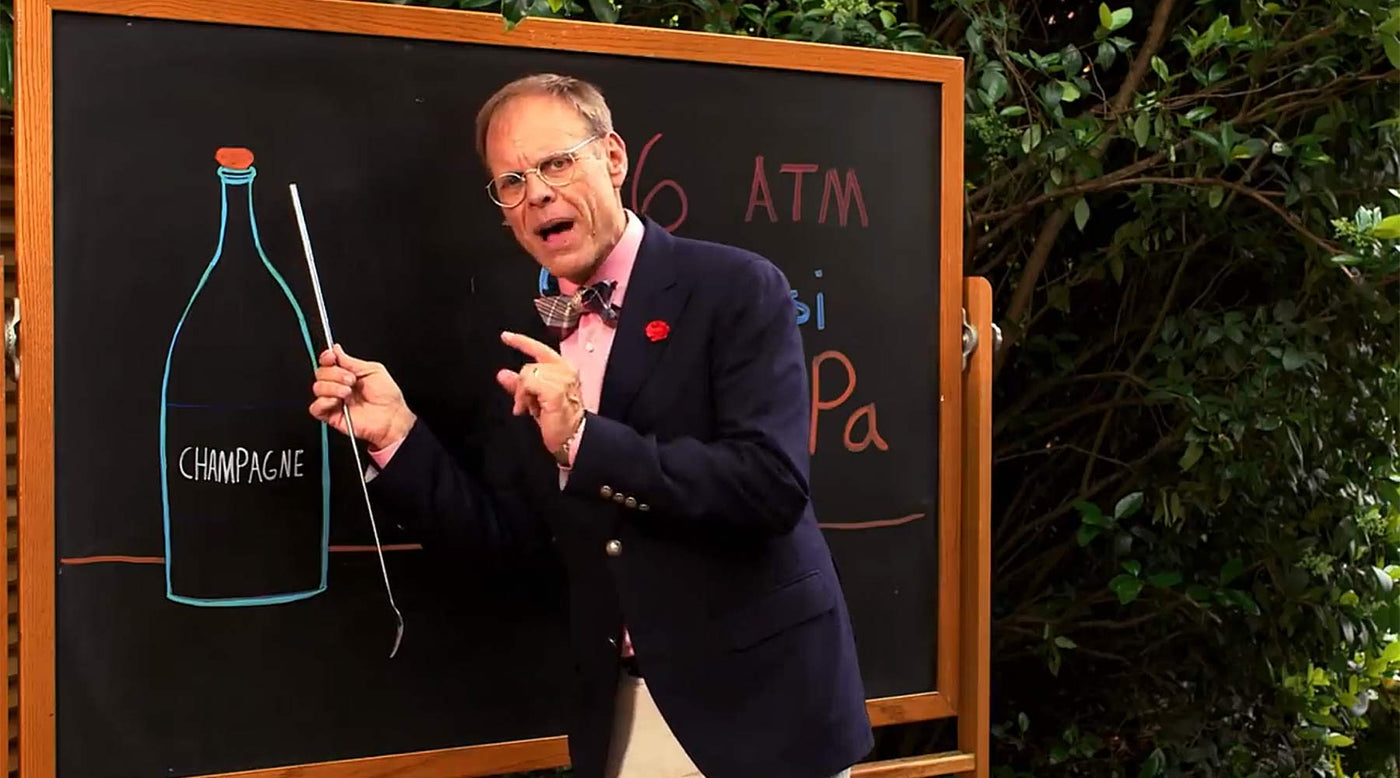Your Cart is Empty

Most importantly the bottle MUST be cold. If you take your chilled bottle off the ice for a long period of time beware of the temperature change. 45 degrees or less is highly recommended to minimize a bottle shattering. Beginners should consider safety glasses or eye wear. Start by wiping down the bottle ensuring its completely dry. You don’t want the bottle to slide around in your hand. Some prefer wearing a glove though this is not necessary. Take your well-chilled bottle of champagne and remove both the foil and the wire cage covering the cork (as you probably know, it’s essential the bottle be well-chilled to avoid leakage, foaming and premature cork-popping).
Locate one of the two vertical seams running up the side of the bottle. Where the seam meets the lower lip of the bottle is the point at which you’ll aim.
Safety first, be considerate of your guests. Never aim towards all people, windows and, obviously, Faberge eggs. Serious injuries can occur from a razor sharp bottle neck striking a person. Those standing close by could receive a champagne shower or an errant glass shard. Your audience should be well behind you or off to the side.
Grip the bottle firmly around the base. Tilt the bottle to a 20-30 degree angle so excessive spillage doesn’t occur. Carefully line up the blade with the bottle neck rim ensuring the two line up and are flush.
Draw the sword back along the seam and then swing (perhaps more of a push) from your body, upward and into the bottom of the lip. Don’t forget to follow through (as with any sport, see the cork popping, be the ball). To minimize spillage, turn the bottle upright immediately afterward.
You do not have to be afraid, just follow through with the movement. It’s not with the wrist it’s with the elbow. There will not be any particles of glass inside the bottle. The pressure will break away everything and blow it away from the bottle. As you can see the cork and neck cut cleanly, and there is absolutely no glass in the champagne.
So after we’ve sabered the champagne and poured it, if you haven’t actually poured the bottle in one serving, please be careful as the edge is very sharp and you could cut yourself. It is always good practice to hold the glass up and visually check for glass shards.
Remember, Safety First.
Enjoy!
His captivating humor is strikingly informative.
Alton Brown, the affable bowtie-wearing television host, author and Cessna owner wields a sword for a good cause: drinking Champagne. Let Brown guide you through this "desperately dangerous display of panache", sword in one hand and Champagne bottle in the other.
Informative, fun and delightful lesson on sabrage
A perfect way to start a celebration, Tamara Berg from the Tamara Twist demonstrates the ceremonial tradition of sabering a Champagne bottle. A votre sante!
( 3:13 video length )
Do not Attempt Sabrage if you are not an experienced sommelier or have the proper training.
We recommend you study and practice with a professional before attempting sabrage. Sabrage is only as safe as you are. Carelessness in preparation and demonstration can lead to injury of yourself and others or property damage. Bottles can explode and flying sharp edged glass may scatter if you do not follow proper sabrage instructions.
Even if proper procedures are followed a champagne bottle may contain defective glass/structure resulting from the manufacturing process. NEVER attempt sabering any other type of bottle. The unique bottle thickness and pressure contained in champagne is not found in other bottle types.
Beware corks will fly varied distances based on the champagne. A sabred cork can fly any where from 3 feet to 40 feet. Sabred corks have shattered glass attached, if a cork strikes a person injury is likely. Always point the bottle in a direction away from people, animals and precious objects.
Champagne Sabre are ceremonial swords and do not have sharp blades. Nonetheless, the tips are relatively shape and can pierce the flesh.
NEVER practice sabrage when you are inebriated or impaired in any form.
Sabered bottles have VERY sharp bottle necks. DO NOT TOUCH the severed neck as it will be razor sharp. NEVER DRINK DIRECTLY FROM A SABRED BOTTLE!
Sonoma Champagne Sabres does not accept responsibility for incidents resulting from anyone using our products. When purchasing or receiving a champagne sabre as a gift you accept individual responsibility for the safety of yourself, others and property in regards to use and/or storage of the sabre.